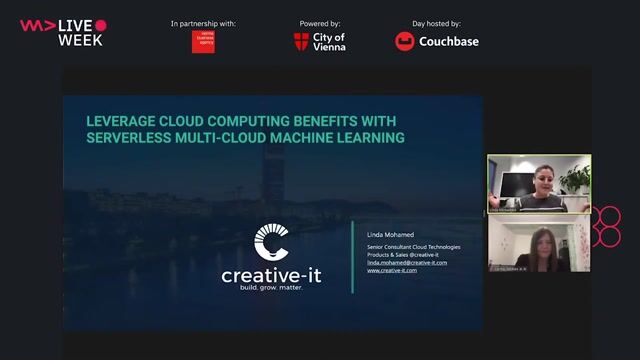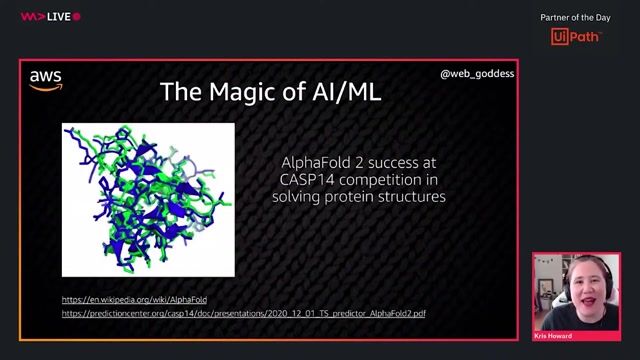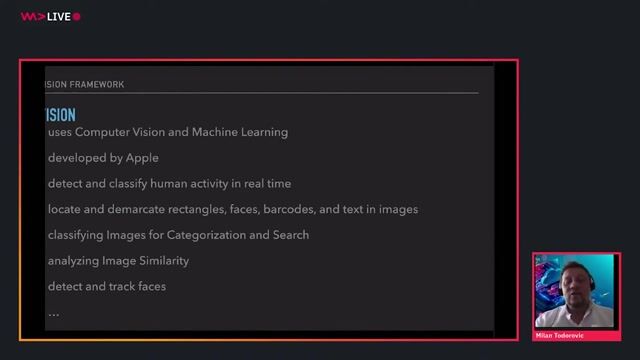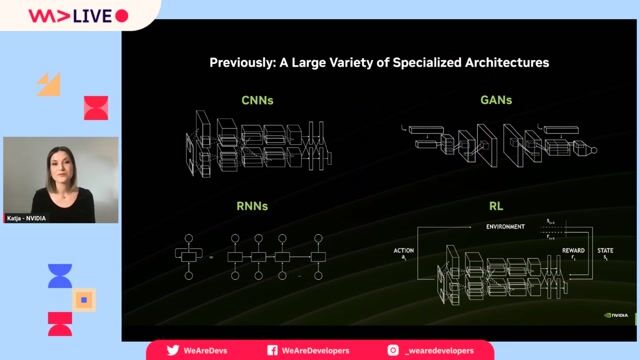Flo Pachinger
Computer Vision from the Edge to the Cloud done easy
#1about 6 minutes
Defining computer vision and its real-world applications
Computer vision enables computers to understand digital images and videos, with applications in retail, public safety, traffic monitoring, and smart cities.
#2about 2 minutes
Understanding the key components of a vision system
A typical computer vision architecture includes cameras for recording, storage for footage, a machine learning pipeline for processing, and a dashboard for results.
#3about 3 minutes
Exploring the features of Cisco Meraki IP cameras
Cisco Meraki cameras are cloud-managed devices with on-board storage and processing for detecting people, vehicles, and audio events like fire alarms.
#4about 2 minutes
Integrating cameras using APIs, MQTT, and RTSP streams
Meraki cameras offer multiple integration points including a REST API, webhooks for cloud events, local MQTT for real-time triggers, and RTSP for video streaming.
#5about 6 minutes
Demoing real-time event detection and analysis
A live demonstration shows how a camera's local MQTT broker can trigger events for person detection in a zone and audio alarm recognition.
#6about 5 minutes
Designing an efficient event-driven vision architecture
Use on-camera analytics and MQTT triggers to send a single snapshot to a cloud vision API for analysis, reducing bandwidth and processing costs.
#7about 2 minutes
Comparing pre-trained models from AWS, Azure, and GCP
A comparison of the pre-trained computer vision models and pricing tiers available on AWS Rekognition, Azure Computer Vision, and Google Cloud Vision API.
#8about 1 minute
Deciding between pre-trained and custom vision models
While pre-trained models are easy to use, building a custom model with your own dataset is necessary for highly specific detection tasks.
#9about 3 minutes
Showcasing computer vision project examples
Practical examples demonstrate architectures for detecting face masks, capturing license plates, and using door sensors to trigger snapshots for analysis.
#10about 18 minutes
Answering audience questions on practical implementation
The Q&A session covers topics like using cameras for home security, filtering out pets from alerts, and the challenges of creating custom models for specific tasks.
Related jobs
Jobs that call for the skills explored in this talk.
Featured Partners
Related Videos
 39:58
39:58Leverage Cloud Computing Benefits with Serverless Multi-Cloud ML
Linda Mohamed
 27:23
27:23From ML to LLM: On-device AI in the Browser
Nico Martin
 49:45
49:45Machine Learning for Software Developers (and Knitters)
Kris Howard
 28:51
28:51Detect Hand Pose with Vision
Milan Todorovic
 45:58
45:58Data Fabric in Action - How to enhance a Stock Trading App with ML and Data Virtualization
Andreas Christian
 56:55
56:55Multimodal Generative AI Demystified
Ekaterina Sirazitdinova
 57:52
57:52Develop AI-powered Applications with OpenAI Embeddings and Azure Search
Rainer Stropek
 43:11
43:11100 million days in Vienna: A story of APIs & AI in tourism.
Thomas Reiter
From learning to earning
Jobs that call for the skills explored in this talk.
Computer Vision and Artificial Intelligence Developer
Vicomtech
Municipality of Bilbao, Spain
Keras
Python
PyTorch
TensorFlow
Data analysis
+3
Solutions Architect Video AI Analytics
VAIBS
Harderwijk, Netherlands
Remote
Linux
Python
JavaScript
PostgreSQL
+3
Cloud Developer
Vision4quality Gmbh
Würzburg, Germany
Azure
Python
Microservices
Continuous Integration
Amazon Web Services (AWS)
E-Learning Experience Manager - AI & Cyber Security @revel8
Merantix AG
München, Germany


